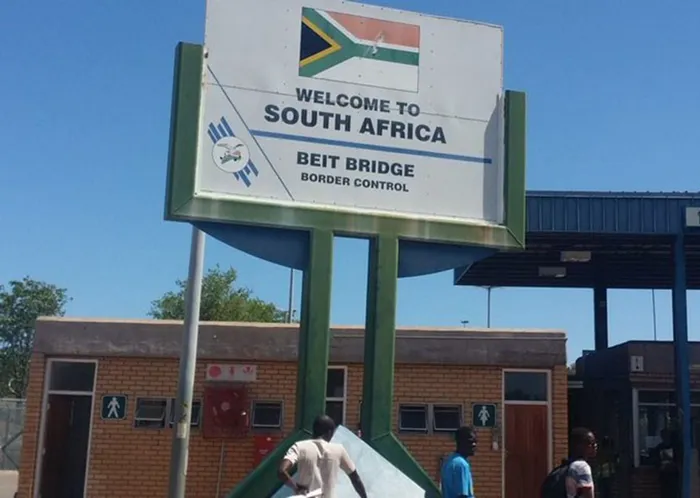How South Africa's One Stop Border Post initiative will revolutionise land ports

The One Stop Border Post (OSBP) concept is expected to streamline and improve border operations at six land ports in South Africa, including Beitbridge, bordering Zimbabwe.
Image: Independent Newspapers Archives
The One Stop Border Post (OSBP) concept is expected to streamline and improve border operations at six land ports in South Africa.
The OSBP will not only deal with two critical issues in South Africa, i.e., security and economic growth, but will also drive increasing efficiency and lower the cost of cross-border trade in SA, said the Minister of the Department of Home Affairs (DHA), Dr Leon Schreiber.
Schreiber remarked on Wednesday when the Portfolio Committee on Public Works and Infrastructure received a briefing by the Department of Public Works and Infrastructure (DPWI) and the Border Management Authority (BMA) on the redevelopment and redesign of the top six land commercial ports of entry and the subsequent implementation of the OSBP concept.
Sihle Zikalala, deputy minister of DPWI, added that the function of the OSBP is a collaborative project between the DPWI and DHA.
Schreiber said this was the type of collaboration that was required for some of the critical infrastructure projects that are economic enablers for the country.
Schreiber added that the advantages will be better infrastructure to have what he called a sanitised border environment, which is critical for security matters, for dealing with corruption, among others.
“Upgrades and better infrastructure are critical to economic growth to increase cross-border trade and to make sure we unlock the potential of South Africa’s land borders to become those key economic enablers in the region and continent,” Schreiber said.
He said the project is catalytic and makes use of technology from inception.
Historically, the SA land port of entry (POE) was not designed and built to facilitate the movement of large volumes of people and goods, resulting in great inefficiencies at the POE, explained Dr Michael Masiapato, the BMA commissioner.
He explained that land ports are congested and stifling trade with the Southern African Development Community (SADC) region, and as a measure to address overburdened POEs, the DHA and BMA identified the six POEs for redevelopment.
They are:
- Beitbridge (bordering Zimbabwe).
- Lebombo (bordering Mozambique).
- Oshoek (bordering the Kingdom of Eswatini).
- Kopfontein (bordering Botswana).
- Maseru Bridge (bordering Lesotho).
- Ficksburg (bordering Lesotho).
Masiapato said the POEs will serve as prime conduits for regional trade, and the construction phase will lead to job creation in the surrounding areas.
Since the BMA's inception two years ago, their success rate in stopping illicit goods and illegal immigrants has been notable.
He said the DPWI had granted temporary custodianship to the DHA through the Government Immovable Asset Management Act (GIAMA) only for the six ports.
According to him, this allowed the BMA to engage in a Public-Private Partnership (PPP) process.
The BMA had undergone a feasibility study and management of the PPP agreements, which were technical.
The commissioner said they received 28 bids across all ports of entry from eight bidders when they closed the bid process on October 24, 2024. He said since then, they have been hard at work with the PPP process.
“We are now in the process of choosing the preferred bidder and getting Treasury approval. The Treasury has indicated that it will take two weeks to look at what we have done, and it will then be able to start negotiations with the preferred bidders. Then we will go into the last approval process for the work to kick start,” Masiapato said.
zainul.dawood@inl.co.za